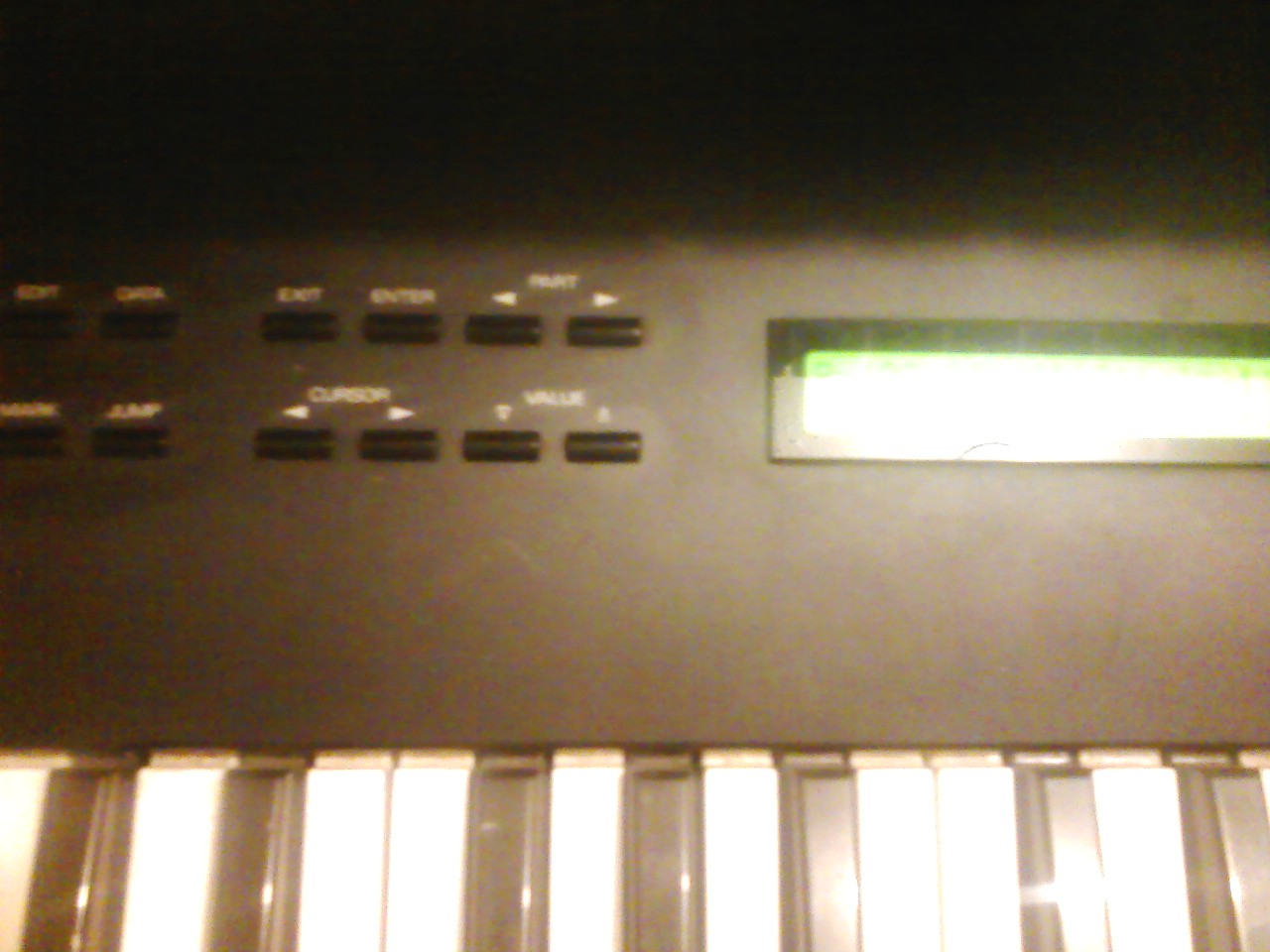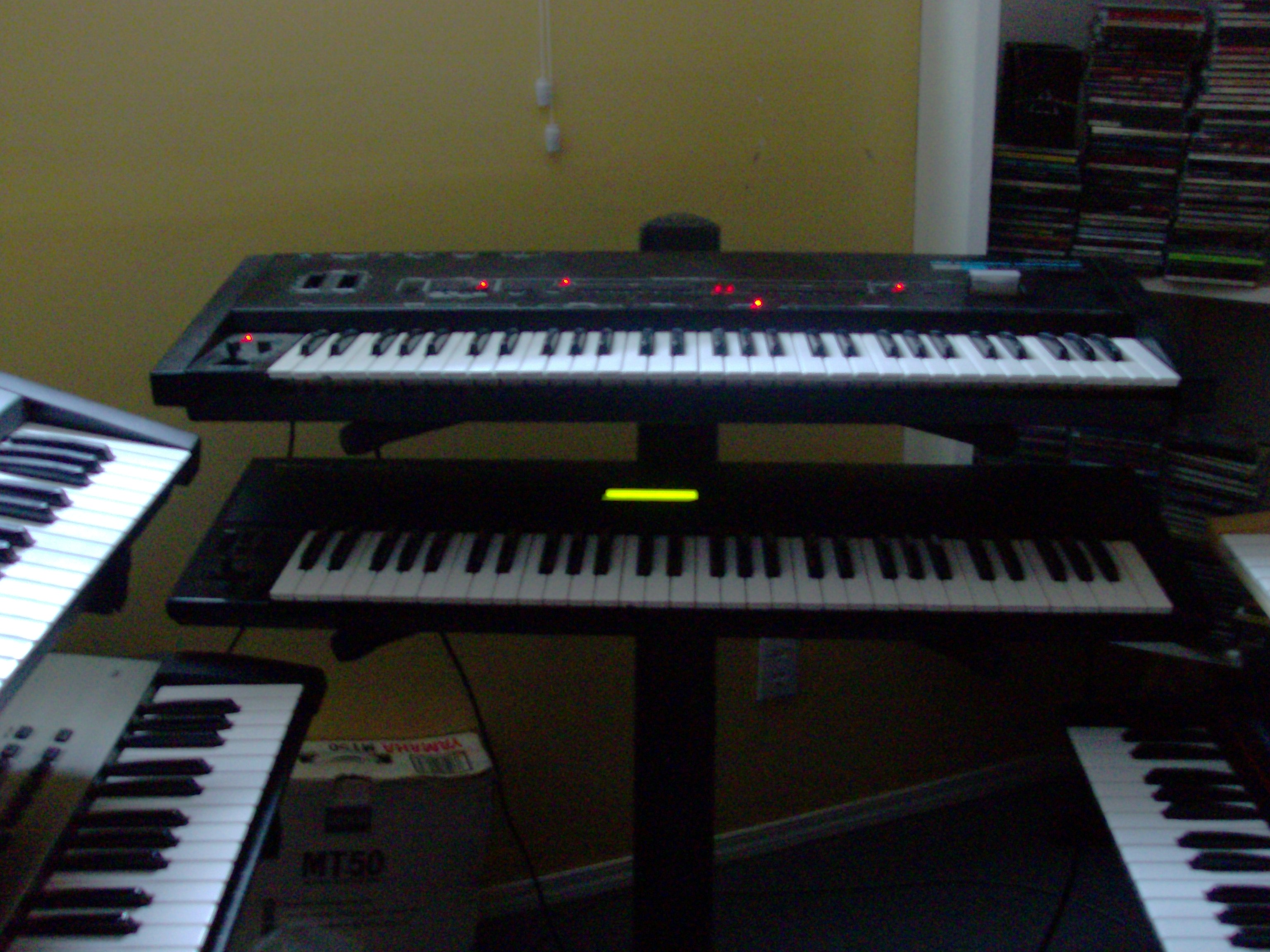




| Features | |
| Keyboard | 61 keys |
| Year Made | 1989 |
| Original List Price | $1695 |
| Polyphony | 30 |
| Mulitimberal | 6 |
| Tones & Patches | 128 tones 64 patches 64 performances |
| Type of Synthesis | Digital PCM Synthesis |
| Effects | Chorus Reverb |
| Sequencer or Arpeggio | Arpeggio |
| Drum Sets | 4 |
| MIDI | programmable 1-16 for 7 instruments |
| Outputs | 4 - Out L & R, Direct Out L & R |
| Backup | Memory Card MIDI sysex |
| Options | Sound cards |
| My Comments |
| I got a good deal on it
and needed a digital piano keyboard, something with a decent piano sound
on it. It didn't take long for me to find it's shortcomings. Little or
no editing ability, the ROM tones are pretty much what you have to work
with. There was a review of this keyboard somewhere that said the sounds
are 80's cheese, I would have to agree, but you can make some interesting
sounds by combining tones. As far as it being durable, some people have
commented that it is extremely durable. I can't see how they figure this,
I don't play that hard and have already broken two keys. Also the U-20
has those crappy Roland buttons that stop working after a while, I ended
up pressing so hard on a button that a screw came out of the circut board
and the button is no longer accessable. This also caused another problem,
the screw jangled inside the unit until it zapped the memory. ALL memory
had been replaced with garbage. I didn't have a computer at the time, so
needless to say I was less than impressed with having to reprogram everything
from scratch. Although I can, I still haven't put the factory presets back.
So now that I've trashed this unit, I will say I've used it steady for
four years, and I gig a lot. I really like the MIDI set-up, you can play
a lot of sounds by layering and splitting the keyboard. I find I make a lot
of patches with several splits so I don't have to change the patches in
the middle of a song (If only there were more keys). I haven't done this
much, but it works as a good controller as well.
UPDATE - july 17 2005 fixed the buttons and just a note I have been using the direct outs to set up a click track by diverting a couple of cowbell sounds there. Then they are amplified and sent to my drummer. Update dec 2005 : one of
the broken keys is broken again, the problem is then there is just a chip
missing and difficult to glue. I guess I will have to try again |
| I rate it I bought it for 500$ c, 255$ c I owned it from jan 1997 - present, Nov 2020-present Current PrePay value 196$ us |
| condition of my keyboard
1 cosmeticaly electronically 2 cosmeticaly electronically |
| Status 2020: Retired from the road but still used for Beker shows! 2016: After years of trying other keyboards this is still the one I take with me on the road. Maybe someday I will add a filter circuit and it will be an incredible machine. The orchestra and Ethnic cards are inserted. 2012: set up with the other keyboards downstairs. 2010: I have decided to semi retire the u-20. It had several things that needed repair. Namely the left output jack and the MIDI in jack. For some reason they break loose from the circuit board. Maybe it has something to do with the angled back, I'm not sure. Anyway I opened it up and fixed it last week. And it is in the basement set up with the other keyboards. 2008: I at the moment have it set up in my dining room! I am gearing up for a live Beker show, and am practicing as much as possible. It also travels with me to gigs but I have my eye on a few replacements, I think this unit should be retired as well. 2006: This is my realistic workhorse, I usually play bass, piano and strings on this. When I start doing original gigs again later this year, I will rely on it less and use it for more of the wild patches I've made |
| Resources
Factory Presets - Here is a SYSEX file of the Factory Presets. U-110 cards - a table of the U-110 cards with comments on the ones I have.
|

